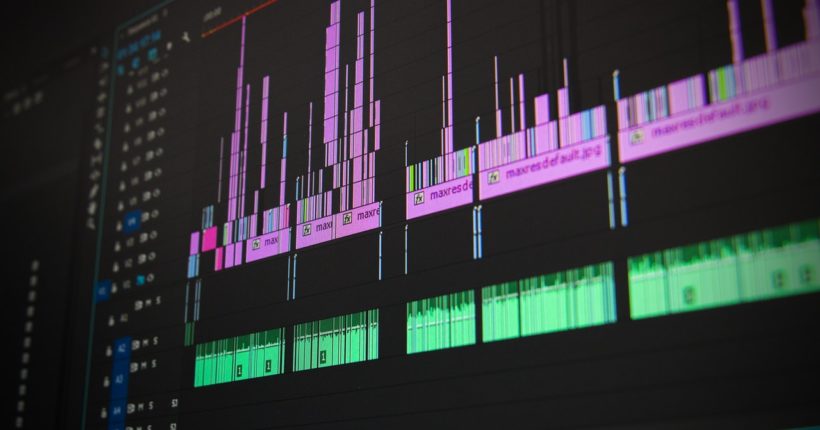Intro
Sound is everywhere. We are literally immersed in the ocean of sound. After many years, we learned how to store it. These technologies developed from the most primitive devices to very complex and intricate systems able to produce results hard to discern from natural. It also requires creating multiple audio formats to meet the needs of a specific person and settings. It implies different requirements for quality, stored file size, etc. What is MP3, AAC, WAV, AIFF, FLAC, or Hi-Res Audio? What is the audio format or audio codec? Such a universe of multiple formats may be rather confusing at first glance.
But first, it’s worthwhile to get to the bottom of terminology and classifications. Otherwise, things might get even more awkward.
Audio file format is a file format to store your digital audio data.
An audio codec is a device or software to encode and decode a digital audio data stream.
Bitrate is the amount of data transferred into audio, or how many bits you need to store 1 second of your audio. As a rule, lower bitrate means lower audio quality, while with higher bitrates, naturally, quality is better.
Kbps stands for kilobits per second, where a bit is a tiny piece of your track.
Audio file formats are divided into three main groups:
- Uncompressed audio such as WAV, AIFF, etc.
- Lossy compression formats, such as MP3, AAC, WMA Lossy, etc.
- Lossless compression formats such as FLAC, ALAC, WMA Lossless, etc.
If something is not clear, don’t worry, more details are on the way. And one important thing—there are tons of different audio formats out there, but there is no plan to discuss all of them. Here we are going to talk about just a few of the most popular ones.
Uncompressed audio formats
High-quality music sounds really good only on professional equipment. You can keep your audio as high quality, vivid and clear as possible without any data compression such as PCM, WAV, or AIFF.
PCM (pulse code modulation) is the analog to digital sound conversion. Simply put, it is a modern method of transforming analog signals into digital sound without compression. This is the type of soundtrack typically found on licensed movie discs. It is incredibly realistic when played through a high-quality home theater system. Concert audio recordings, classical music, operas, and operettas in that format are stored for playback on sufficiently powerful, preferrably professional equipment. It served as a basis for WAV and AIFF.
WAV/WAVE (Waveform audio format) is not a new format; it was introduced in 1991 as one of the first multimedia containers for uncompressed audio. To be fair, WAV is now used less frequently. It is even used to store lossless compressed audio tracks in some cases. WAV, like all uncompressed audio formats, consumes storage space intensely. A minute of audio takes no less than 4-5 MB. It only makes sense to be so careless with storage space if you intend to listen to the audio on professional speakers or use it for mixing, mastering, and editing professional videos and clips.
AIFF (Audio Interchange File Format) is a highly professional container format created by Apple. Apple has always prioritized high-quality sound, and all of the company’s portable players, without exception, supported this uncompressed format, allowing musicians and audiophiles to enjoy near-perfect sound. It consumes memory just as quickly as WAV. One minute of AIFF (44.1 kHz, 16 bit) equals about 10 Mb of disc space. It was made as an alternative to classical WAV and provides better metadata support for your album names, tracks, etc.
As you can see, an extremely important disadvantage for uncompressed audio is the amount of space it needs. Such tracks consume it greedily. Also, you need a professional arsenal to handle such a huge amount of data.
Lossy audio formats
Lossy compression can make your music files as compact as possible while giving up sound quality. However, only expensive hardware can help you detect all the flaws in lossy compressed audio, since to properly compare the band range of lossy and lossless compressed audio, a budget speaker is insufficient.
MP3 is an abbreviation for MPEG Layer-3. This most popular audio format allows you to listen to your music on iPods or tablets and is supported by almost any device. However, in order to reduce file size by an order of magnitude when compared to CD-quality recordings, a significant portion of the original data is discarded, resulting in poorer sound quality.
The bitrate of an MP3 file also influences its sound quality. MP3 files with a bitrate of 128 kbps lose more information than files with a bitrate of 320 kbps. There’s no reason to listen to 128kbps bitrate files anymore, given the dramatic drop in memory costs. With limited storage space, MP3s at 320kbps make sense, and they are also the standard format for downloading files from the Internet.
The AAC (Advanced Audio Coding) format is patented. It also uses compression like MP3, but the sound quality it provides is superior due to slightly more efficient algorithms like MDST. AAC is used for iTunes downloads and Apple Music broadcasts (at 256 kbps), as well as YouTube.
The Vorbis format, also known as Ogg Vorbis because it uses the Ogg container, is an open-source, patent-free alternative to MP3 and AAC. Ogg Vorbis stores audio that has been compressed to some extent, as well as associated information—tags and metadata of various types—in the same format as MP3, but the quality and streaming optimization of Vorbis is clearly superior. Spotify broadcasts use Ogg Vorbis at 320 kbps.
Lossless audio formats
When codecs that compress data are used for transcoding analog music to digital, a partial data loss occurs in any case. But with so-called lossless compression, it produces rather high sound quality. In other words, only professionals can notice differences from uncompressed digital audio when using professional audio equipment.
FLAC (Free Lossless Audio Codec) is the best audio format for lossless compression. FLAC is great for fitting more tracks on a CD while maintaining their quality. A track in FLAC is about half the size of a WAV or AIFF file, while in terms of sound, no noticeable difference is present, even on the coolest semi-professional headphones. The negative side is that it’s rather heavy and requires special players for old OS.
ALAC (Apple Lossless) and WMA Lossless (Windows Media Audio) are two similar formats introduced by the digital world’s main competitors, Apple and Microsoft. They have been around for a long time, but they are not widely used. Without separately installed software, most players, smartphones, and tablets cannot play ALAC or WMA Lossless. The file size they produce can be larger than with FLAC, but this has no effect on sound quality.
High-Resolution (Hi-Res) Audio
There is no universal standard for high-definition audio, as there is for HD video. Without going into specifics, this term usually refers to recordings that have a higher sampling rate and/or bit rate than CDs (for example, 16-bit/44.1 kHz). Hi-Res audio files, for example, have parameters like 16-bit/96 kHz or 24-bit/192 kHz.
Hi-Res audio sounds better because it contains more audio information than compressed audio, which loses data during compression. These formats take up more disk space, but the quality is well worth it.
Hi-Res audio includes uncompressed formats like AIFF and WAV, as well as lossless formats like FLAC and ALAC. DSD (partly a niche format for Super Audio CDs) is also related to the Hi-Res audio category, albeit with a much smaller number of supporting devices. When it comes to streaming, services like Tidal Masters use MQA packer to send high-resolution files over networks with the lowest bandwidth possible.
Which audio format is the best for you?
Your format preference is defined by whether you value storage capacity or sound quality, as well as the devices you intend to use.
MP3s were popular when disk space was extremely expensive. Because smartphones, music players, and laptops now have massive amounts of memory, it makes sense to look for formats offering higher quality than traditional CDs.
FLAC or other lossless formats may be a good option for archiving your audio files. They are a good compromise between compression level and sound quality, resulting in high-quality digital music while saving disk space. Simply ensure that the format you choose is compatible with your devices.
Final words and MP4 to Audio converters
You require converters for your audio or video files regardless of the type of audio you need or the level of music quality that is suitable for you. Aspose offers a set of high-quality, efficient, and, best of all, free converters to extract audio tracks from your videos. Aspose MP4 to MP3 Converter, MP4 to WAV Converter, or MP4 to WEBM Converter, as well as many other Aspose free online tools, are aimed at helping you with various daily tasks in your office or at home.
Posted inNews, Aspose.Slides App Product Family






